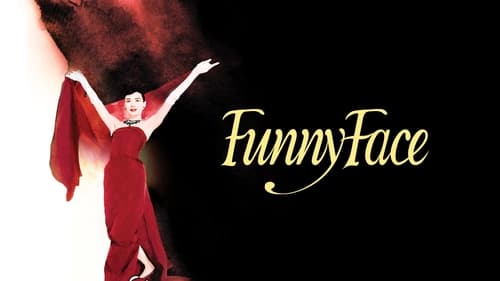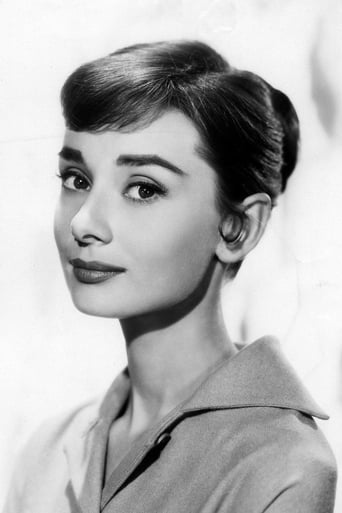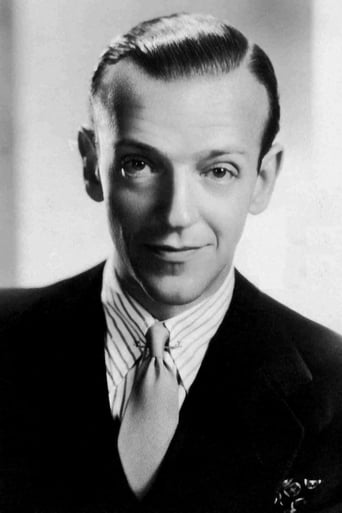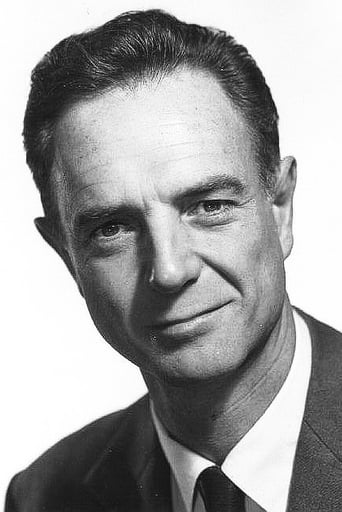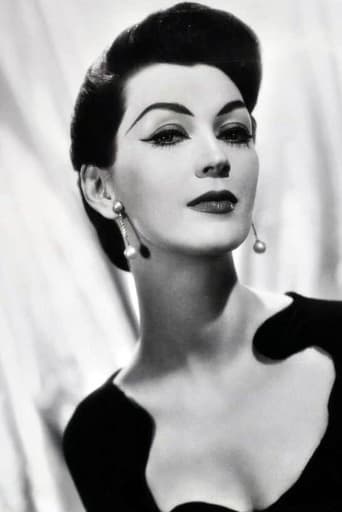Inclubabu
Plot so thin, it passes unnoticed.
Asad Almond
A clunky actioner with a handful of cool moments.
Stephanie
There is, somehow, an interesting story here, as well as some good acting. There are also some good scenes
Fleur
Actress is magnificent and exudes a hypnotic screen presence in this affecting drama.
m-leschack
I rated the movie a 4 because of the second half of the movie. Kay as a Woman's magazine editor was wonderful. Exaggerated her bossiness but enjoyable never the less.Contrary to many of the reviewers I think the match between Fred and Audrey was wonderful throughout the movie. Fred Astaire had a sexiness that could easily sweep a woman off her feet regardless of age. If you can possibly get to see the movie "The Pleasure of His Company" which I believe has not been released officially on DVD, you learn when Fred no longer had the sexiness to attract women young or old. Audrey metamorphosis into a divine model while slightly hard to believe, it makes no difference. I want to believe it!My problem with Kay Thompson is in the second half of the movie. Kay doing a song and dance routine seemed ridiculously out of place. She appeared to be an utter clod. The director should have gotten someone else or just had Fred dancing and singing alone.
hall895
Audrey Hepburn and Fred Astaire are rightly Hollywood legends. Two great talents who both routinely turned in excellent and, especially in Hepburn's case, charming performances. But their talent and charm aren't enough to salvage Funny Face. It's a musical in which the songs are not memorable. It's a love story which never for a moment sparks to life. Attempts at humor fall flat. The plot as a whole is rather uninteresting. Hepburn and Astaire are good enough to save the film from being completely dreadful. But even those two great stars can't make the film enjoyable.Astaire plays fashion photographer Dick Avery, Hepburn his reluctant model Jo. Jo is a shy, bookish, almost drab Greenwich Village bookstore clerk. She's an intellectual, philosophical girl who certainly has no interest in the vapid world of fashion modeling. But Dick thinks she has "the look", whatever that means, and Jo finds herself whisked away to Paris to be the face of a big fashion campaign. For Jo the trip is a means to an end, in Paris she hopes to meet up with the weirdo beatnik philosopher she idolizes. Anyhow off to Paris we go. There's some singing and dancing but not much in the way of plot. Inevitably Dick and Jo fall in love despite Dick looking old enough to be Jo's grandfather. The aforementioned weirdo philosopher enters the fray, still not much plot, and eventually the film crawls limply across the finish line. The film has a couple decent moments. Hepburn's famously strange dance is entertaining. Bonjour, Paris is a lively musical number which takes great advantage of its beautiful setting. But the other songs are pretty much all duds, with a couple being truly terrible. Of course Astaire has his requisite big solo dance number which is as technically excellent as you'd imagine but it doesn't really grab you. The two big stars give a game effort but the chemistry between them is sorely lacking. Astaire is a great song and dance man and in this film Hepburn gets to show off some vocal chops and smooth moves as well. But when they're not singing and dancing, when they're just talking and trying to make us believe they're falling in love Astaire and Hepburn don't convince. It's a romance with no spark at all. Audrey Hepburn is easy to love, her charm is always enough to provide the viewer a few smiles. But this film has little else going for it.
dglink
Splashy colors, Paris locations, Fred Astaire's dancing, Audrey Hepburn's pixie-ish charm, Stanley Donen's direction, and George Gershwin's music should have melded into an enduring musical classic in 1957's "Funny Face." However, the talented individuals involved produced a dated, clumsy film with but a few bright moments. Poor tweedy philosophizing shop girl is transformed into an elegant stylish fashion model, a "My Fair Lady" wannabe. While Audrey Hepburn is never convincing as a mousy clerk garbed in shades of drab, she comes alive in designer clothes, and, quicker than you can say "Givenchy," the character swaps her principles for a haircut and makeover, a walk down the runway, and a trip to Paris. Hepburn was often paired with older men in her films; however, Cary Grant, William Holden, and Gary Cooper had enough masculine sex appeal to be convincing love interest for a young woman. Fred Astaire, however, was never romantic material, even for those of his own age. In "Funny Face," Astaire in his late 50's is about 20 years older than Hepburn and looks it; oddly, neither the age difference nor Astaire's reason for advanced bachelorhood is ever remarked upon or mentioned in the script.Leonard Gershe's screenplay for "Funny Face" is planted firmly in the Eisenhower 1950's. Astaire's chauvinistic attitude, "the man asks the woman to dance," is archaic and would have been poison to a free-thinking young woman like Hepburn's Jo Stockton. Kay Thompson's magazine editor is a post-World War II stereotype of the working woman: unmarried, hard, bossy, mannish, and abrasive. Only in mid-20th-century America would a harem of lemming-like "yes-women" blindly follow Thompson and mindlessly praise her every mundane uttering. Further undermining the film's credibility, the supposed pictorial output of Dick Avery, a successful fashion photographer, and Maggie Prescott, editor of "Quality" magazine, is limp at best; Avery's photos are mediocre, and Prescott's earth-shattering idea is "think pink." As always, Fred Astaire's dancing is worth watching, and, although her singing is more flat than melodic and her dancing mixed, Hepburn is always a winning charmer. However, under Donen's direction, the film does not soar, but rather lumbers from clumsy number to embarrassing parody; bearded beatniks, soul-searching laments, Parisian dives, empathetic philosophers, and even fashion magazines seem so last century. "Funny Face" may be worth a view as a mid-20th-century curiosity piece, but otherwise the film is most suitable as source material to excerpt scenes for documentaries on Astaire and Hepburn. Most viewers will have to think pink to plod through "Funny Face."
secondtake
Funny Face (1957)I was prepared to love this movie and it let me down even though it has two fabulous leads, the classic musical dance man Fred Astaire and the new star Audrey Hepburn. It even has its photography based on the work of Richard Avedon, and Astaire's character is based on him in his fashion work. I enjoyed it, but it depends too much on common formulas, which I normally don't mind, and it lacks cohesion, flow, and what you might just call magic.That it's partly shot in New York and then Paris (a famously rainy Paris during the shoot) you would think you could hardly go wrong. And in a way it doesn't go wrong overall. But the plot lacks energy, the romantic chemistry is missing (the two are really more like father and daughter), and the series of dance numbers is choppy and uneven. Because of all this, each song goes on too long and you itch for the next scene, and then that scene merely takes us back to the weak plot.If you focus on these weaknesses the movie starts to look almost terrible. Hepburn's transformation from a tweedy intellectual in a bookshop in Manhattan to the premiere runway in Paris sounds like dream come true stuff, but it isn't really convincing (or surprising, of course). The French counter-culture intellectual scene is fun idea but it doesn't push it very far, and the leading voice is played by an actor with no presence at all. Hepburn's interactions in this whole world are forced. Even the opening twenty minutes, which sets the tone, is rough sledding before out two leading actors appear.But focus on the strengths and there are some great moments. Like the series of photo shoots, one after another quickly spreading across the highlights of the city, is fun and stylish. A few of the dance numbers, though short of classic, are great fun, like the modern one in the French smokey bar and the one in the darkroom with the safelights on. In both of these, again, director Stanley Donen (a consummate pro at this stuff) let things drag on just a minute too long, which is a long time in a fast moving movie like this.Then there is Fred Astaire, at ease and warm and really wonderful. He doesn't get a chance to quite blow the doors off any of the dances, but he's still a joy to watch, dancing or just being his warm self. (He was initially a reluctant actor at this point in his life, but was still very active. For a sense of his truer self, perhaps, behind the scenes, see "On the Beach" two years later.)Then there is Audrey Hepburn, by now a stellar and unique star trying to spread her wings into musicals (this was her first). She, as usual in her career, rose above her part and like Astaire was "herself" with such charm she keeps even weaker scenes going. When she's in them, which luckily she is in most of them by the second half. Hepburn also comes across as a superb model (appropriately thin, but not especially tall), and Avedon's photographs of her taken in conjunction with filming are iconic. They get incorporated into the movie directly, both in the scenes where Astaire creates some photos in his role, and in some of the cinematography which imitates Avedon's style (white backdrops, modern styling). In the end it's a great seeming movie with such huge flaws it's just another musical. But that's not fair, quite, so think of it as an up and down ride with some very very fine high points which make it worth watching.




